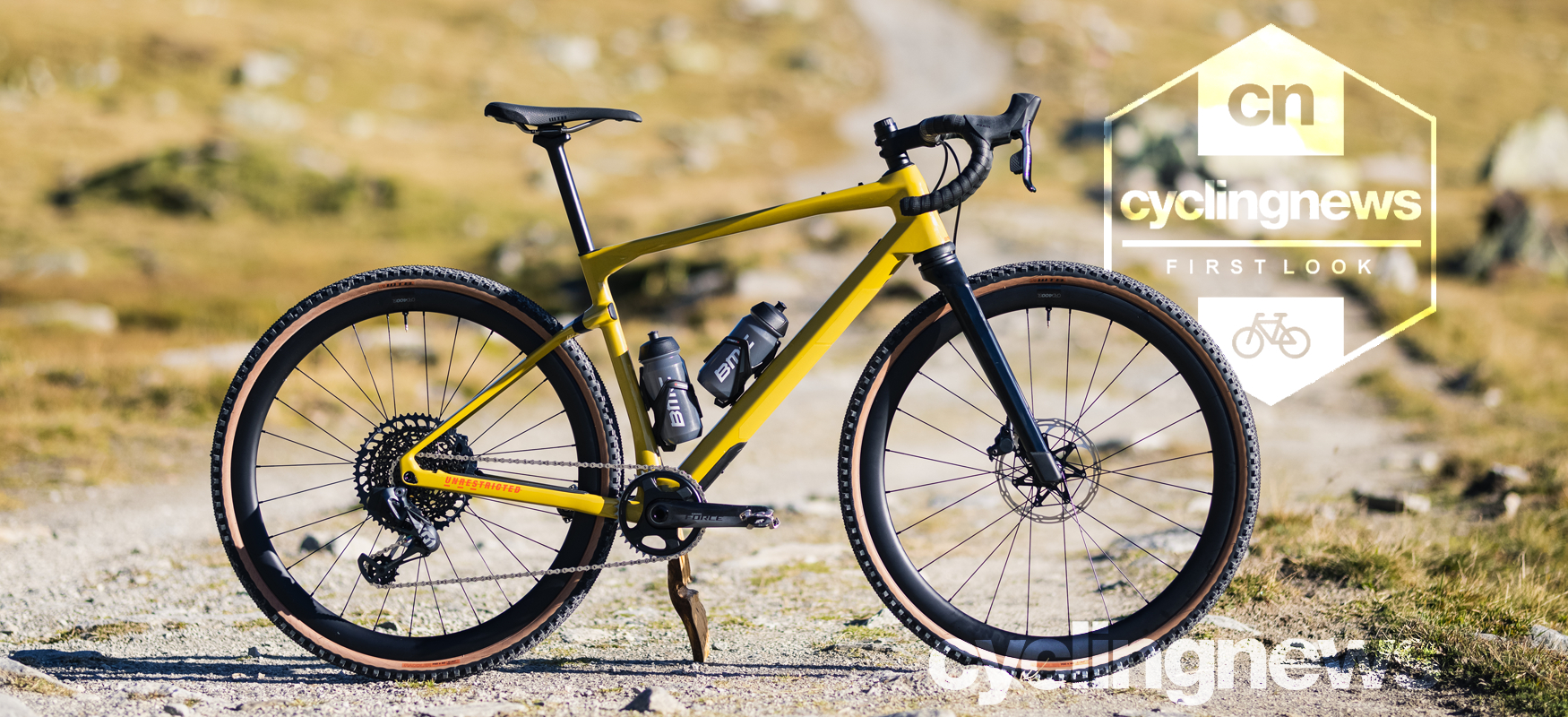Early Verdict
If you are looking for a subtle bump-smoothing gravel bike, BMC’s approach to the in vogue trend of gravel front suspension is tidy and very sensitive. The ride position and geometry is great for a broad mix of gravel but if you want to see how unrestricted the URS LT really is you will want to upgrade the tyres
Pros
- +
MTT suspension does an incredible job at absorbing high-frequency vibrations
- +
Huge gear range and smooth wireless shifting from SRAM’s XPLR/X01 mullet groupset
- +
Downtube and fork dropout protection
- +
Minimal fork design looks sleeker than the MTB style gravel suspension
Cons
- -
45mm tyre clearance falls a little short of the gravel tyre clearance status quo
- -
Standard 40mm tyre spec feels small for an adventure orientated bike
- -
Top out clunk from the front suspension is noticeable when unweighting the bike
- -
Suspension tuning comes with additional costs
- -
No fork leg luggage bosses
You can trust Cyclingnews
BMC’s all-road and gravel catalogue has grown a lot over the last few years, now sitting at 13 different bikes which span every form of adventure from occasional off-roading to multi-day adventuring in remote corners of the world giving almost any rider the ability to choose the best gravel bike for their needs. We were lucky enough to be invited to the Swiss alps by BMC to ride two new bikes. The first was the BMC Roadmachine X which is a road bike that can dabble off-road, the second couldn’t be any more on the opposite end of the spectrum.
The URS is BMC’s most capable gravel bike, equipped with a 10mm rear suspension damper, it filled a niche that BMC refers to as ‘Gravel Plus’. The new BMC URS LT takes the existing URS platform and adds more capability. ‘LT’ stands for long travel and has been used by BMC to denote the more capable models in BMC’s line of mountain bikes. In the case of the new BMC URS LT, the capability comes in the form of a brand new Micro Travel Technology (MTT) suspension fork with 20 mm of coil-sprung travel in the steerer which was developed in partnership with the Italian brand HiRide
Gravel suspension is the next contentious subject and the jury is certainly still out for many riders as to the advantages and disadvantages of adding active suspension systems, so does the addition of a gravel suspension fork mean that the URS now truly earns its UnReStriced name?
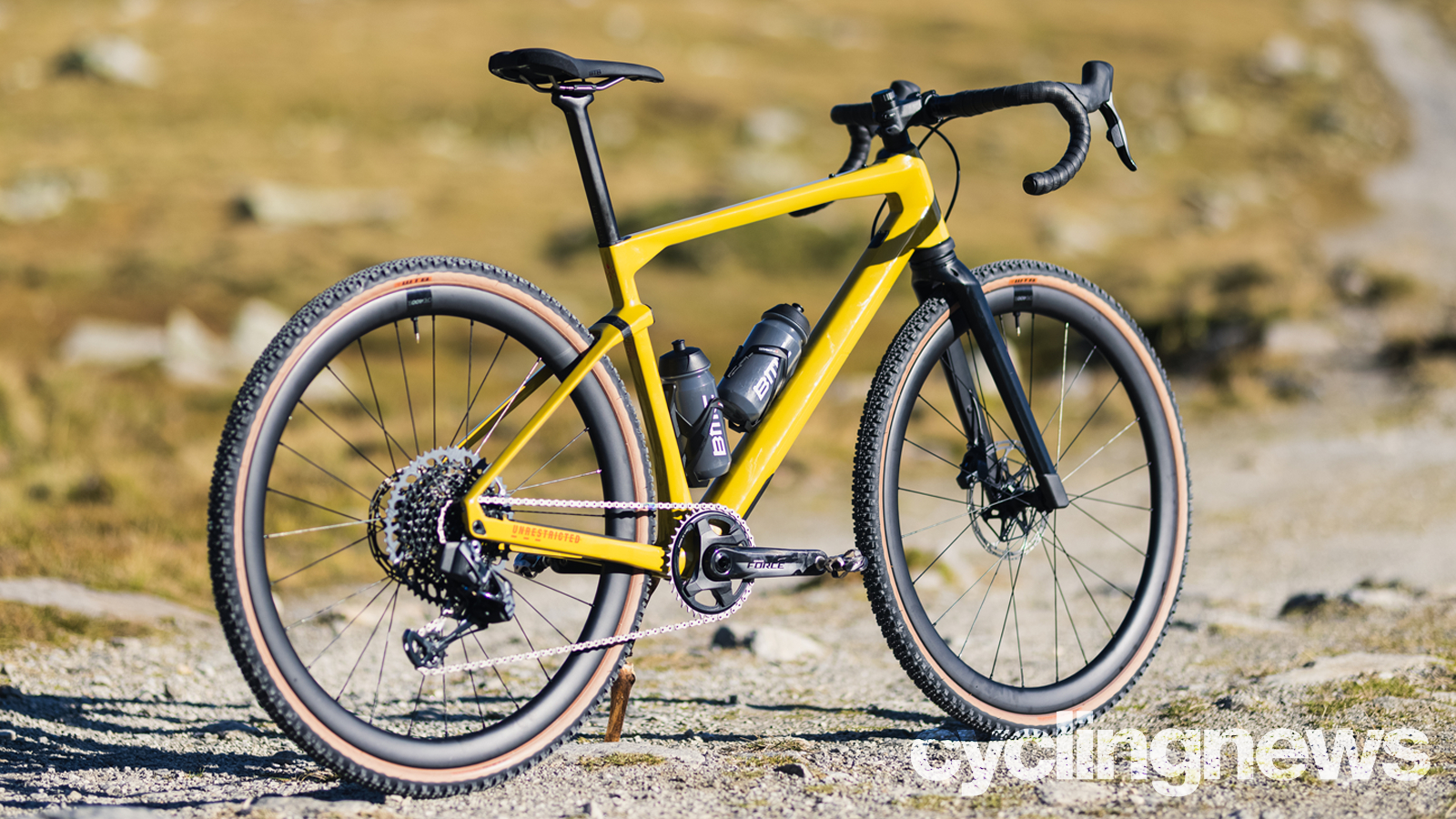
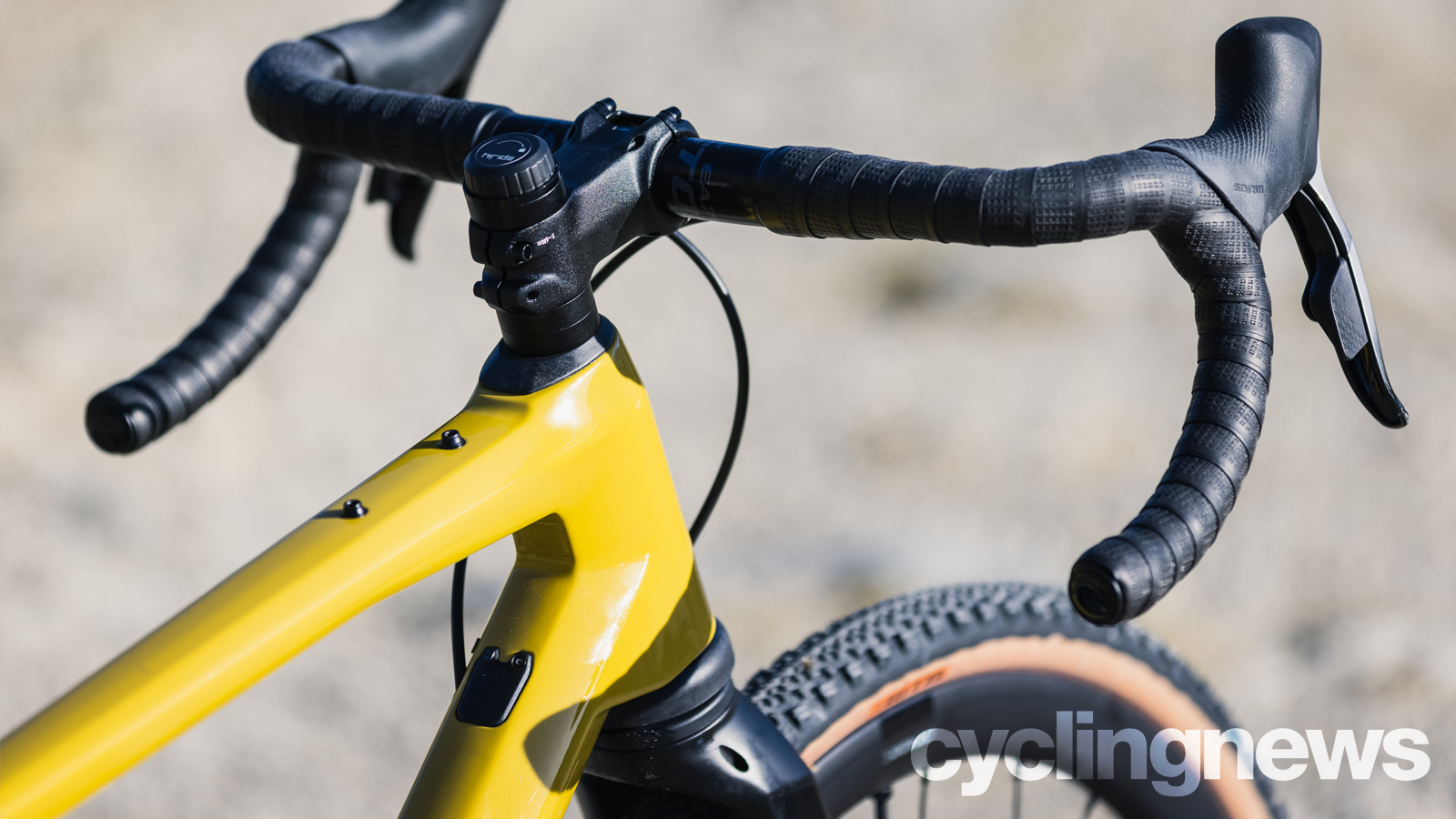
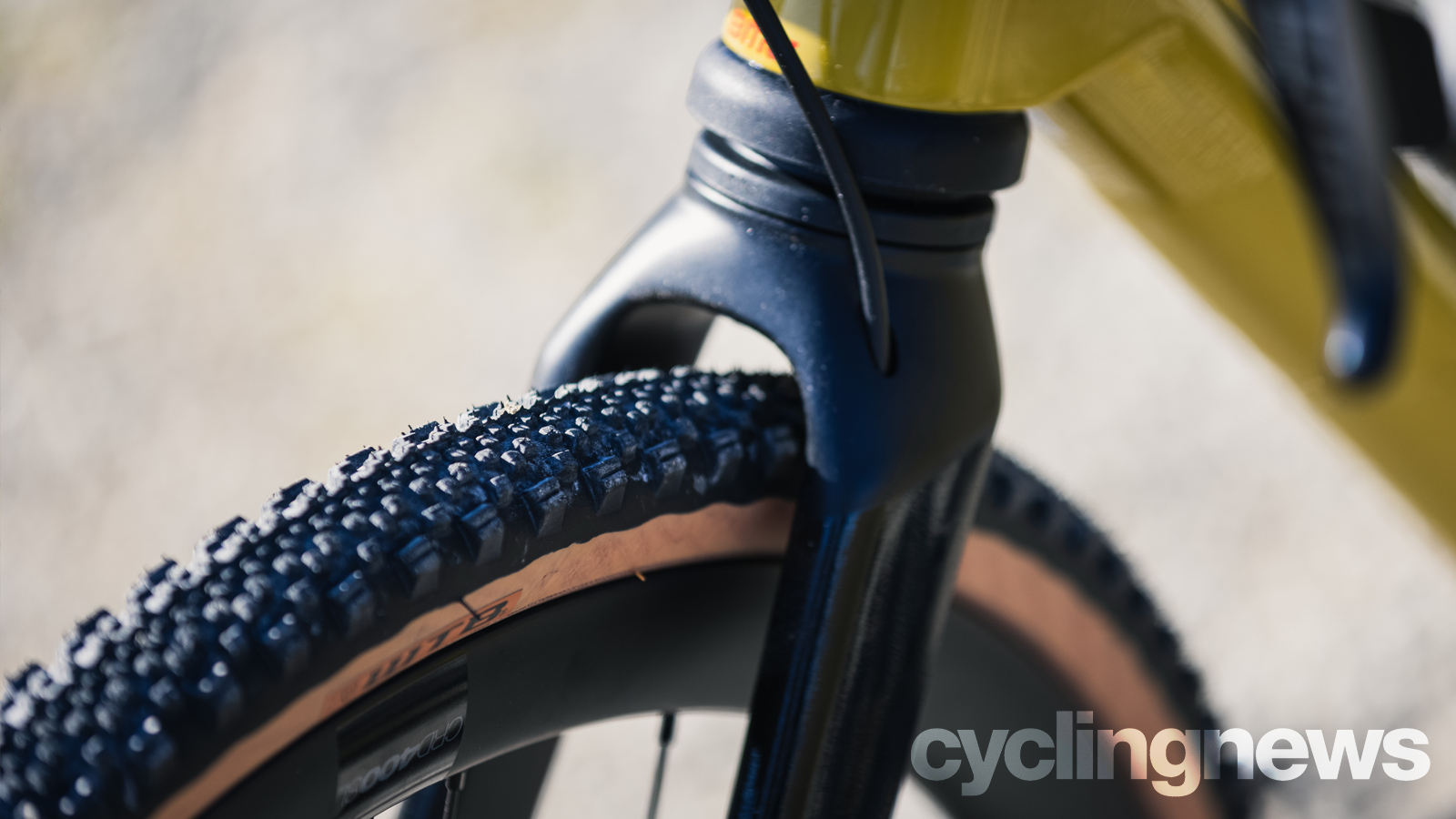
Design and aesthetics
The big-ticket update for the new URS LT is that it now features a new front suspension design that was created in collaboration between BMC and HiRide who are the designers behind the Paris Roubaix Pinarello Dogma FS. The system offers 20mm of coil-sprung suspension that is positioned between the fork crown and headtube. This system uses a hydraulic damper and offers a linear spring curve which BMC claims will reduce vibration energy by 46 per cent.
For some, the idea of micro-suspension may seem a bit pointless in terms of delivering tangible performance gains. To determine the validity of a front suspension design on a gravel bike, BMC fitted accelerometers to the front axle and below headtube, as well as other sensors, and were able to ascertain the type of vibrations and the resulting effects that are experienced on a ‘typical’ gravel ride. By performing field testing, BMC says that it was able to isolate vibration spectrums, accelerations, efficiency (power/speed to determine beyond subjective rider feelings) as well as the interactions of tyre and suspension with vibrations (more on that later).
The conclusion was that the vibration frequency of a ‘typical gravel ride’ shows two peaks at 40hz and 20hz. Mountain bike forks are able to deal with the larger impacts but struggle to react to the higher 40hz frequencies due to friction from seals around the telescopic legs. This led to the development of a very short travel gravel-specific suspension design with a very sensitive linear stroke.
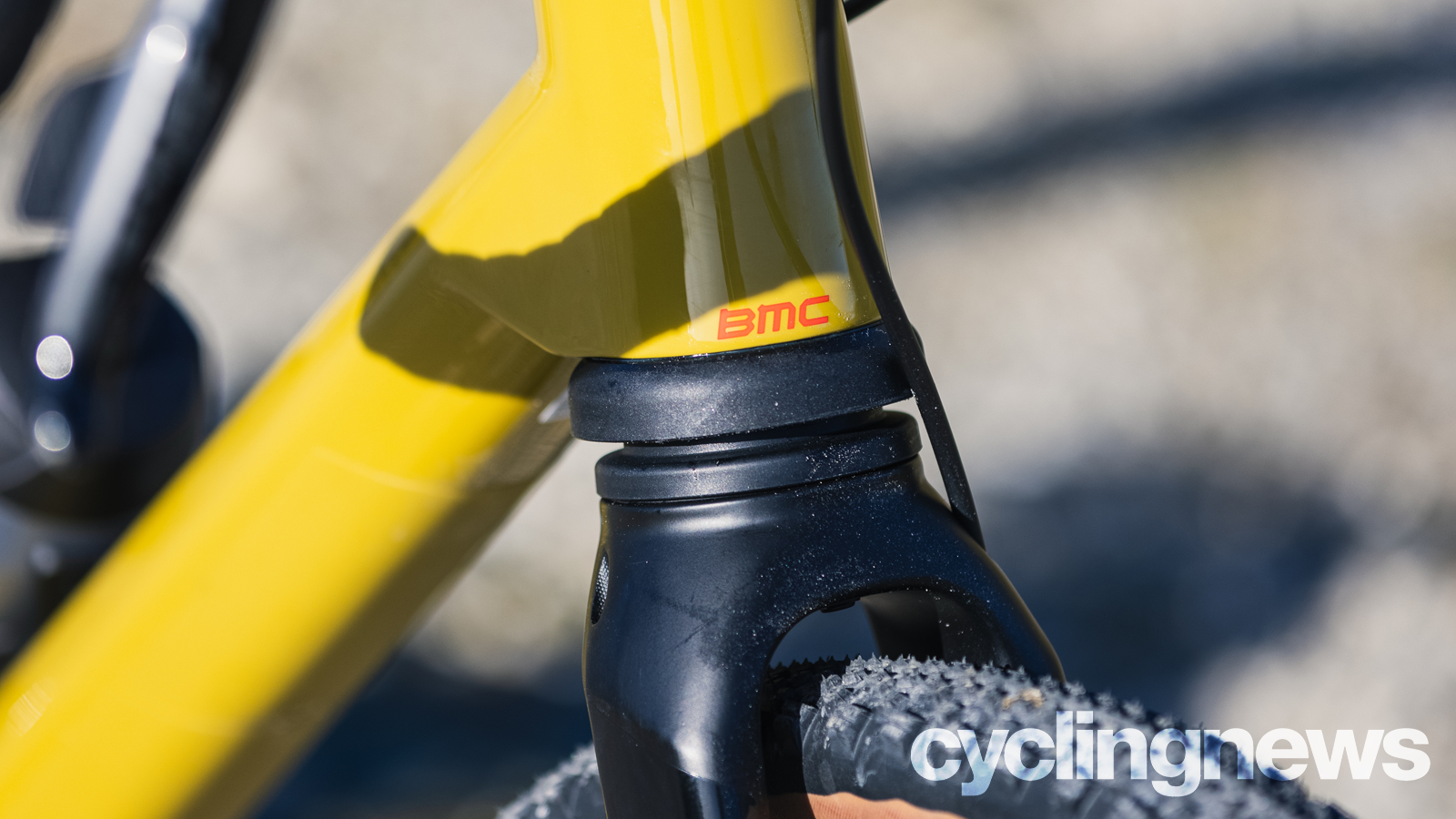
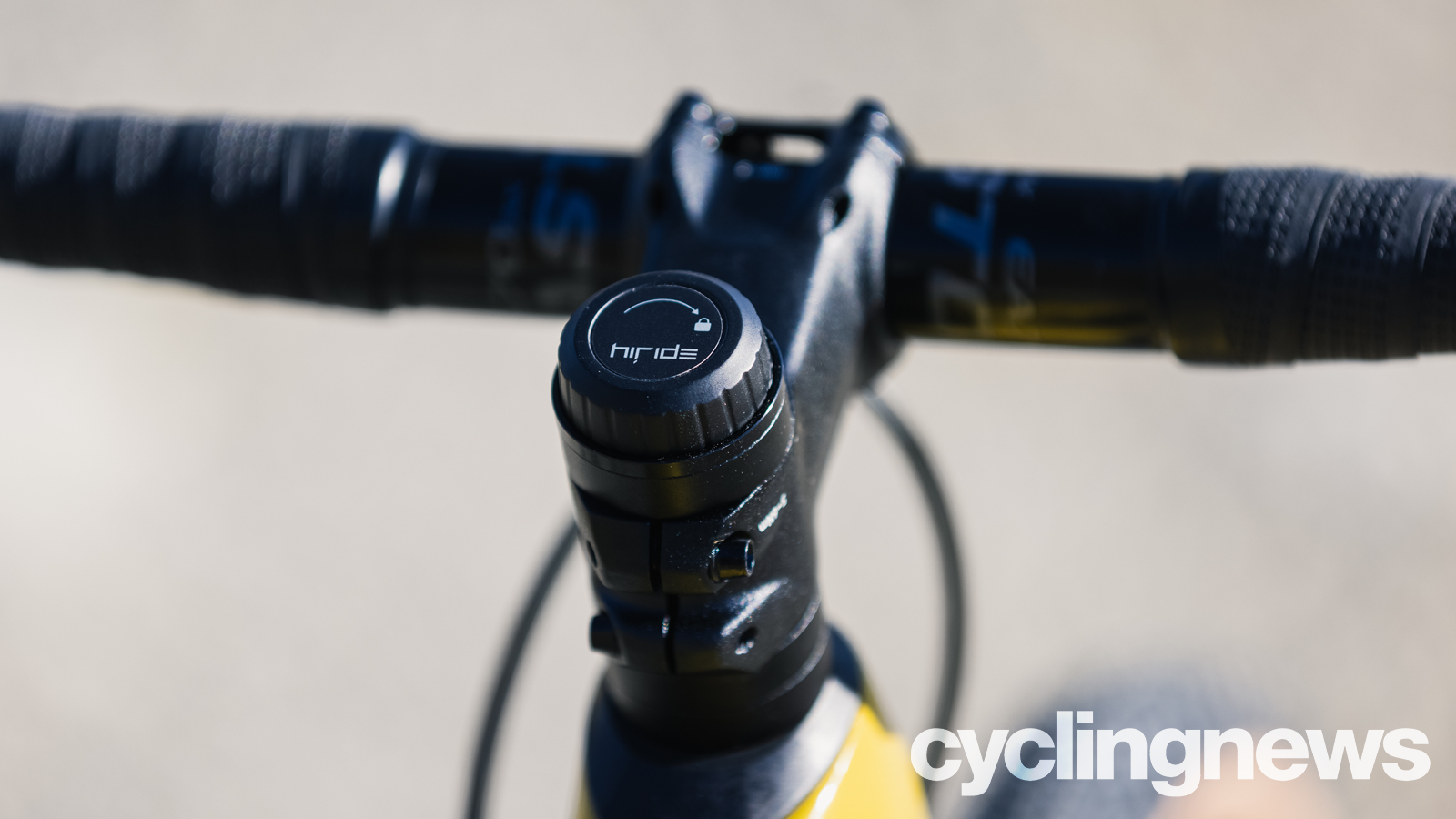
The actual suspension workings are all housed within the 1.25 inch steerer and is neatly integrated within the bike. There is no requirement for any proprietary stem or headtube sizes and it still allows a 40mm adjustment of stack height if you need to chop the steerer down. The system features a lock-out which is controlled via an on/off dial on the top of the steerer and features a blow-off valve to protect the system - and your wrists - should you inadvertently clatter into something with it locked out. All bikes will be shipped with a medium spring, although the suspension is tunable and there will be soft and hard options available should you need a different spring stiffness. There will also be three levels of preload spacer available which allows the rider to tune the sag (how far the fork compresses under the weight of the rider). Sag is recommended to be around five mm and is an important adjustment when tuning suspension as it's what keeps your front wheel connected to the ground and maintaining traction as you roll over rough terrain. It must be noted that if you want to make any of these adjustments BMC stipulates that it should be done by an official BMC dealer.
The suspension fork with its steel and aluminium structure adds an extra 800g over the original with a claimed weight of 1250g - which is on par with RockShox’s Rudy Ultimate XPLR and lighter than Fox’s 32 AX, although both these units feature far more adjustment.
BMC has considered the extra servicing requirements that comes with suspension units, this helped influence the choice of speccing a coil spring with the goal to reduce maintenance as much as possible, quoting that the hydraulic system should be reviewed every two years.
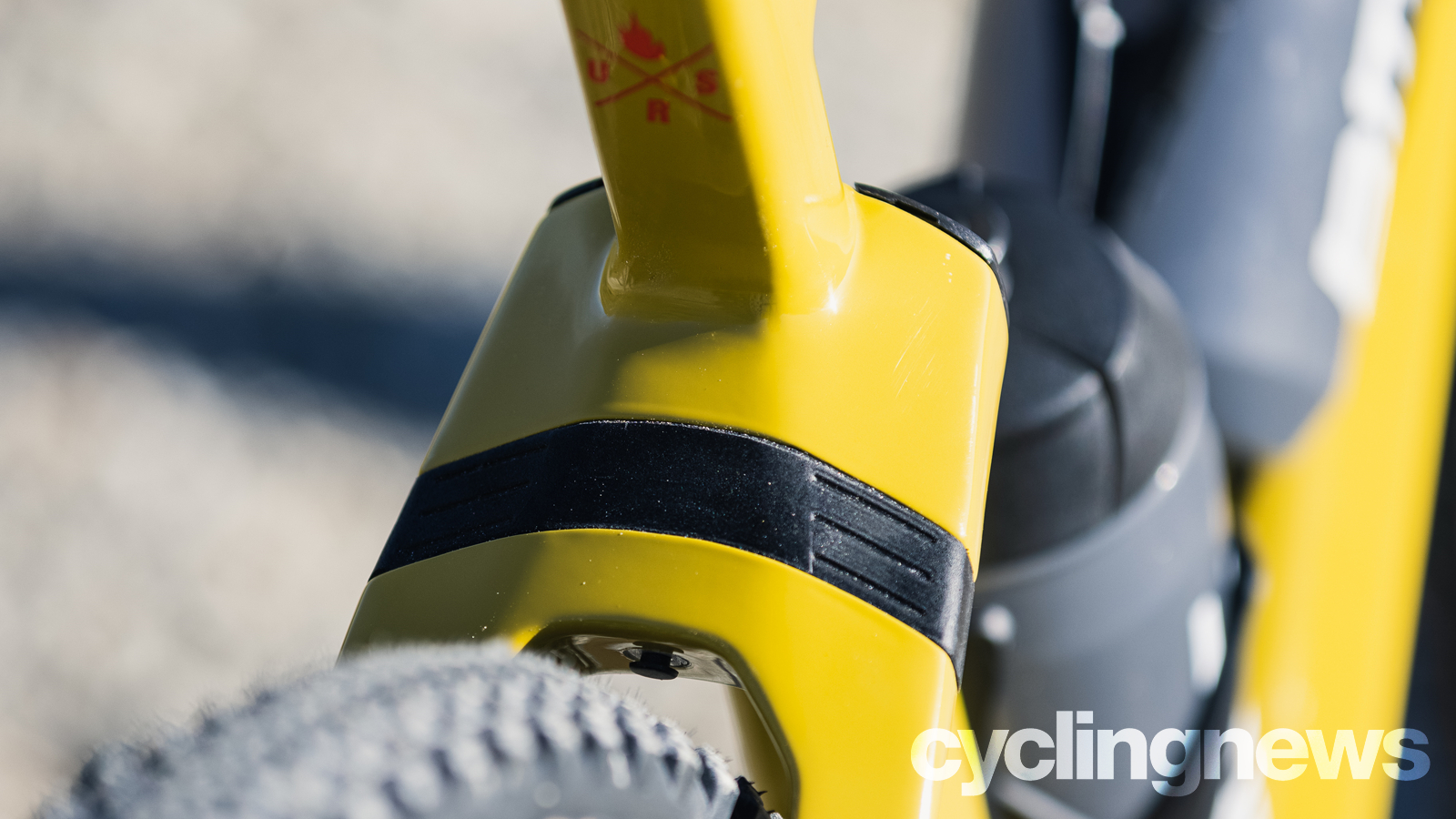
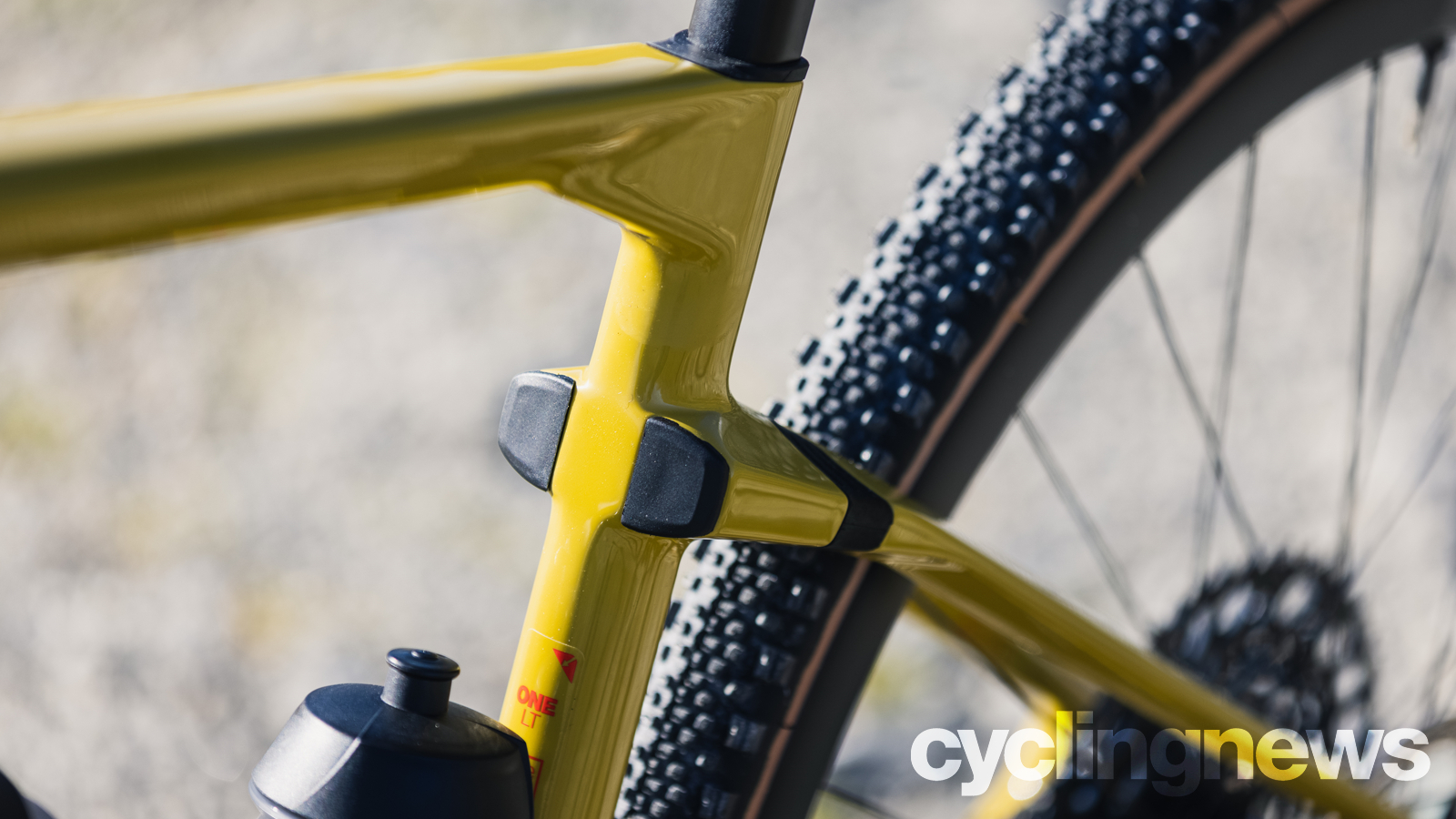
While the fork is all new, the URS frame remains unchanged from last year other than getting a lick of yellow paint. The mountain bike derived MTT rear suspension continues to offer 10mm of rear suspension using an XCell damper. XCell is a tuned elastomer from the automotive industry that uses two metal internal guides to retain horizontal stiffness and flex from the carbon rear triangle to pivot the rear end. As there are no moving parts the system is very low maintenance and only adds around 80g to the frame weight.
BMC believes ‘off-road bikes should have off-road geometry’ so the Gravel Plus concept goes beyond the suspension and has been applied to the frame geometry as well. Despite the addition of a 20mm suspension fork, the geometry numbers are the same as the previous model when the fork is set at five millimetres of sag. A long 415mm (size medium) reach and short stem takes influence from mountain bikes, lengthening the wheelbase and then using a short stem (70mm on a medium frame) to bring the fit back to the realms of average. An inline post further shortens the reach by 15mm and helps centre the rider on the bike for better traction control on loose surfaces. A fairly slack 70-degree head angle compliments the shorter stem and the seat angle is set at a standard 74 degrees.
As an adventure bike, BMC has added a bunch of additional features to help it take on the long gravel days and bikepacking. There are three bottle cage mounts, a top tube bag mount and a rack mount on the frame. The fork features internal dynamo routing and there are mounts for guards as well. The lack of fork cage mounts is the only glaring absence, limiting luggage carrying capacity, especially for smaller riders who are unable to run a frame bag. To avoid damage from rock strikes, BMC has finished the frameset with boots on the fork legs and bottom bracket armour that extends a little up the down tube with the rest of the downtube is shielded with factory fitted protective tape. For those that want to really find out how unrestricted the URS is, there is internal routing for a 27.2 dropper post that can be fitted in the D-Shaped seat tube with the aid of a shim.
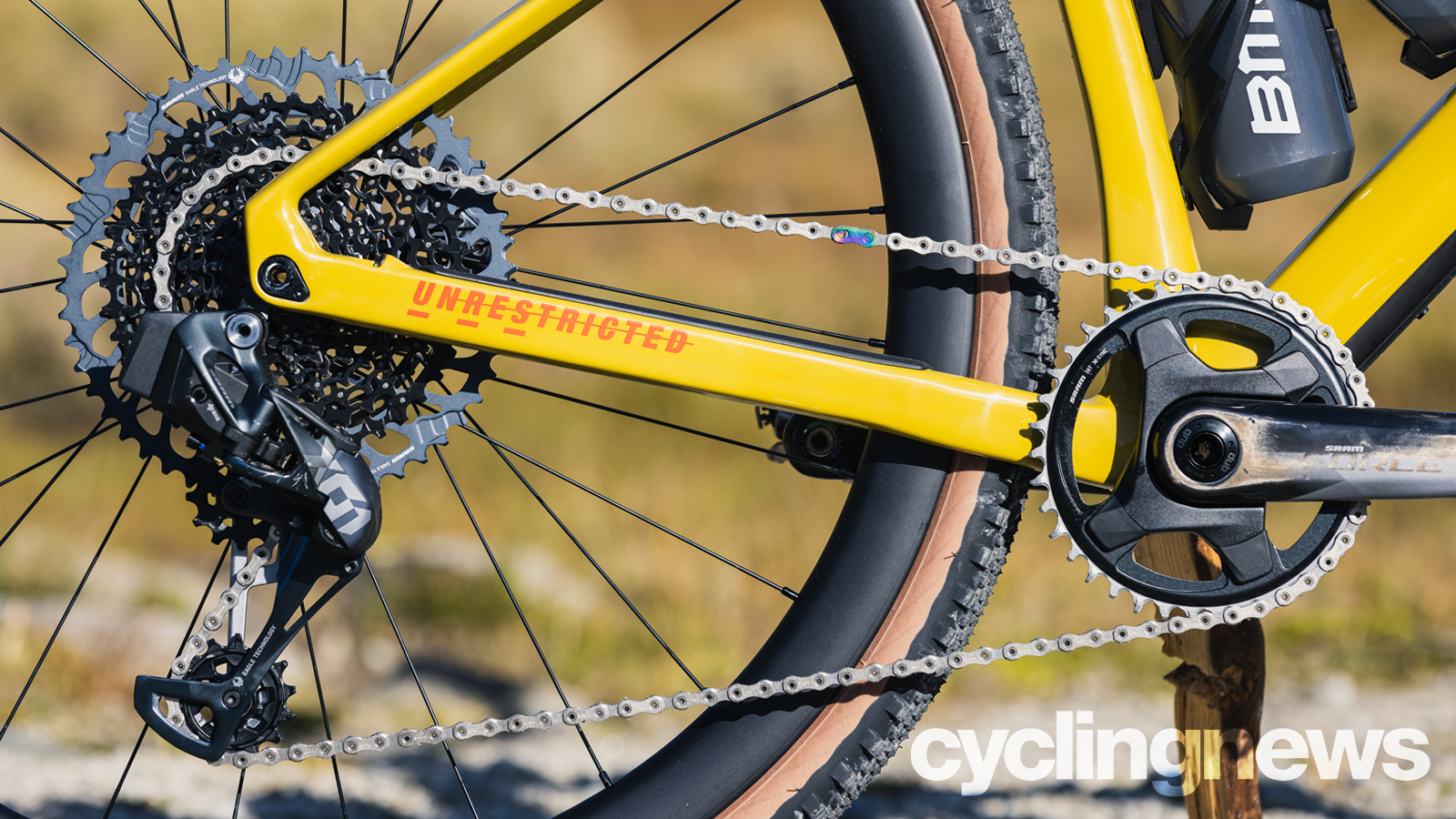
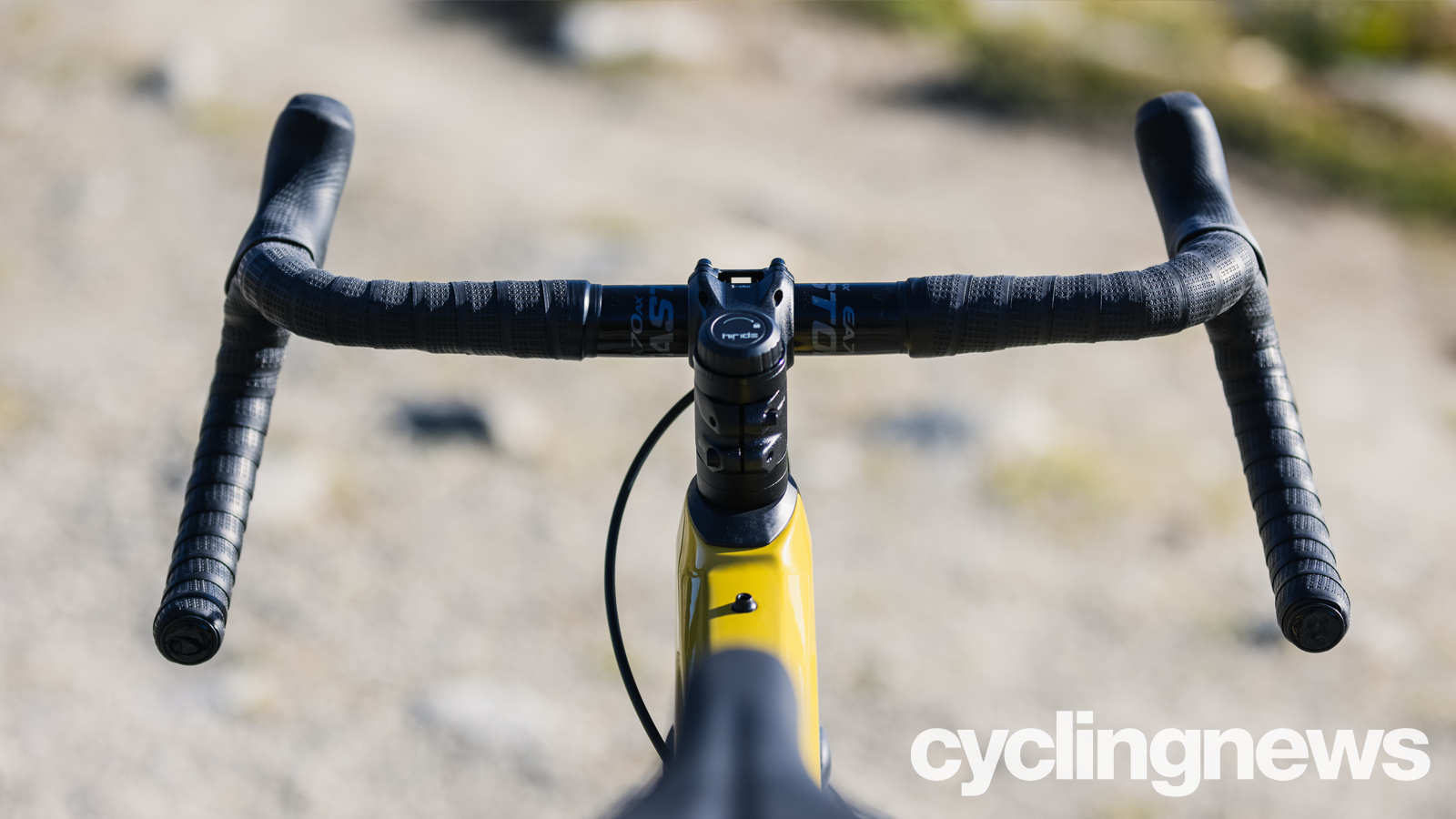
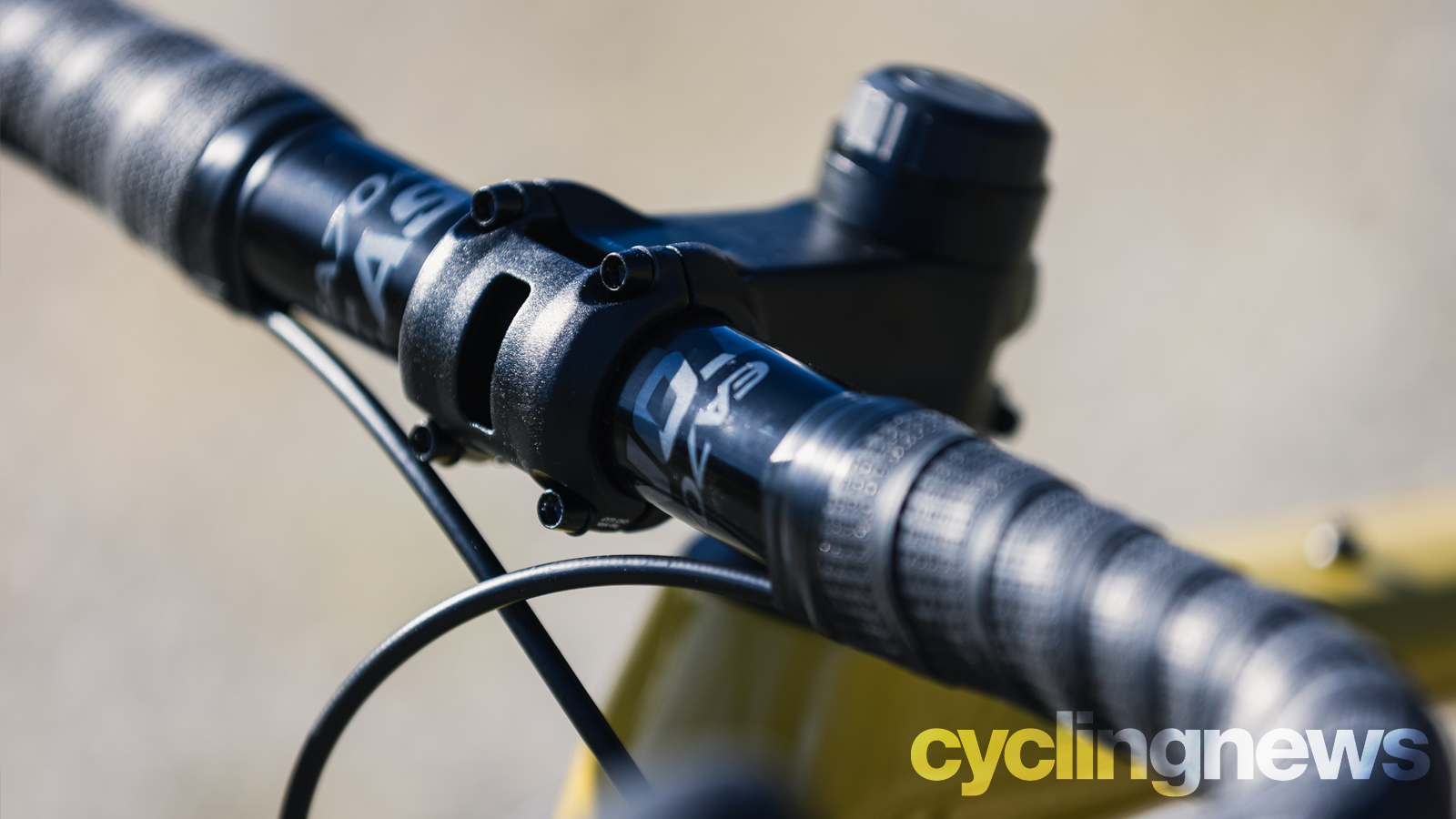
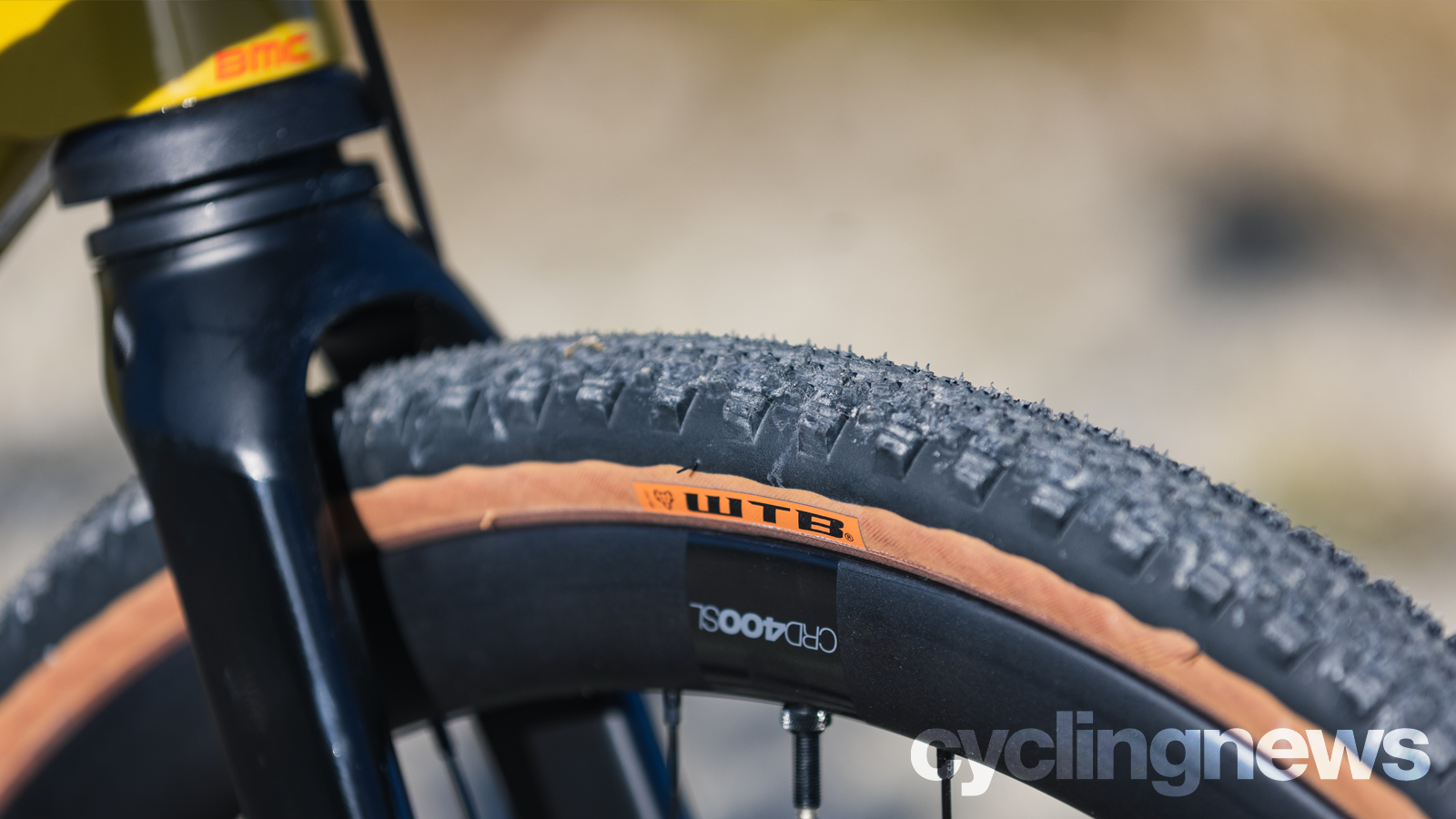
Specifications
To meet the increased versatility of the rest of the bike, BMC has used SRAM’s Force XPLR crankset and drop-bar levers and paired it with a monstrous 10-52t 12-speed cassette and the X01 mountain bike rear derailleur that's needed to handle such a large cassette. The cassette is paired with a 38t chainring so you have some seriously low gears should you need to winch up any obscene gradients. The brakes are also SRAM Force and are paired with 180mm front and 160mm rear rotors for ample stopping power.
Wheels are BMC’s in-house CRD-400 carbon wheelset which weigh in at a claimed 1577g. Dimensions are right on the money too with the 40mm deep profile and a 23mm internal rim diameter.
Tyre clearance of the frame is measured at 45mm and the stock tyres are WTB Raddlers in 40mm, we would have liked to see BMC plump those numbers to match other bikes on the market which can easily fit a 50mm tyre. The Raddler tyre offered a predictable grip and rolled well although we have to question its durability due to the surprisingly high number of punctures our group suffered on the test ride.
The D-Shaped seatpost offers noticeable compliance althoughadmittedly not quite as much as Canyon’s VCLS leaf spring seatpost. The post is topped with a WTB SL8 Titanium saddle which proved comfortable during our ride.
The cockpit consists of an Easton EA70 AX carbon handlebar and BMC MSM02, standard internal cable routing means hoses are exposed at the front end but there is little clutter as the groupset is wireless.
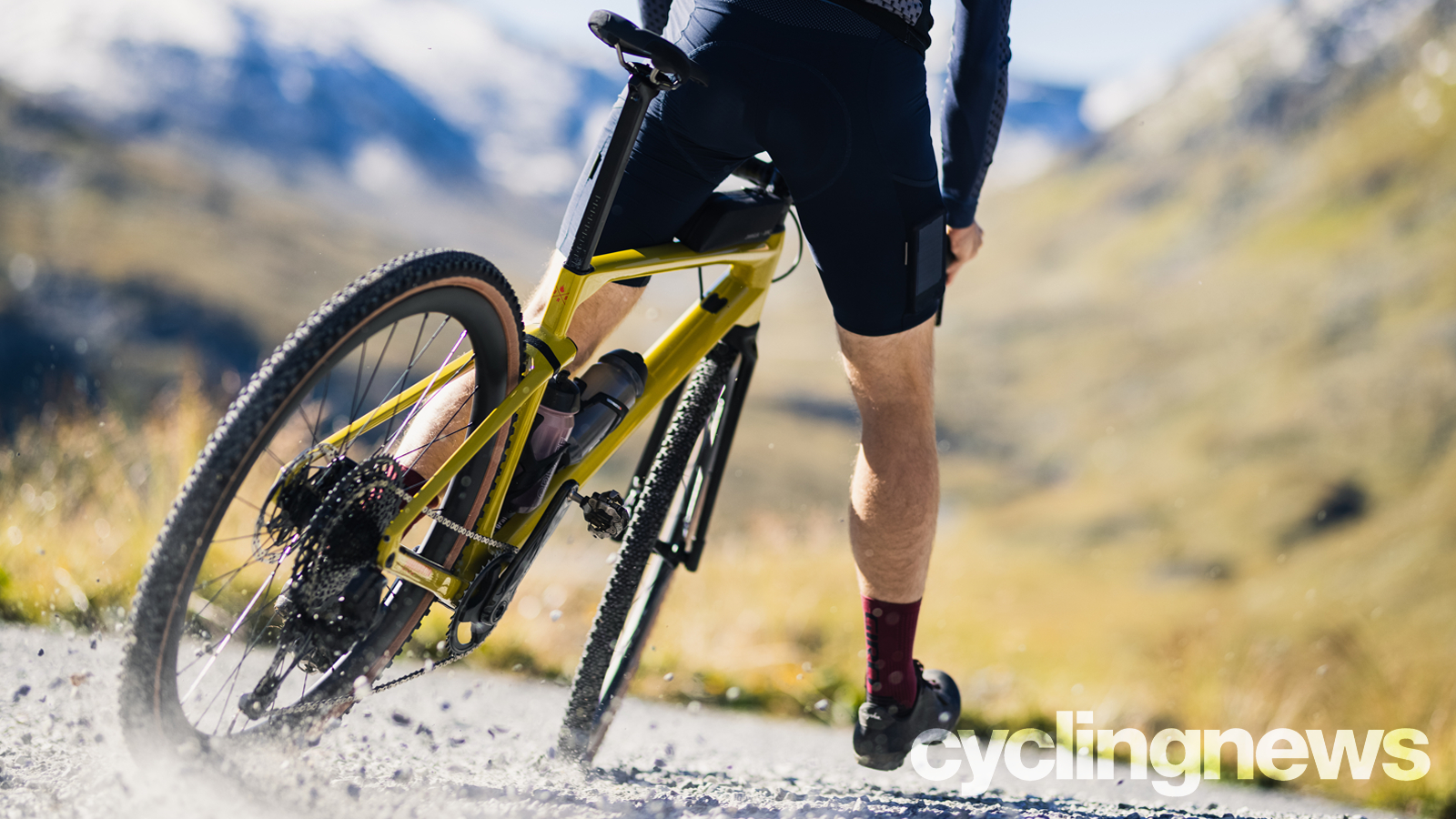
First ride impressions
In practice the front suspension is surprisingly unnoticeable on smooth vibration rich terrain, quickly and efficiently reacting to the imperfections on the ground to give a carpeted ride feel at the bars. Traction felt as good, if not marginally better, than a standard big tyre and rigid fork combo although I would need to do back to back testing to actually determine if there is a tangible difference when the tyres are scrabbling for grip in a rough corner. There is little in the way of wallowing or flex when the system is scythed through a high load turn either so steering remained accurate and predictable.
When climbing the front suspension doesn't move around much, even when out of the saddle, and it isn't until you really start throwing the bars around that you start to notice any bob. Obviously, a quick twiddle of the lockout dial will firm that up should you be faced with a climb on a smooth surface. Otherwise leaving it open on steep rocky climbs helps aid control by eliminating momentum diverting front-wheel pinballing.
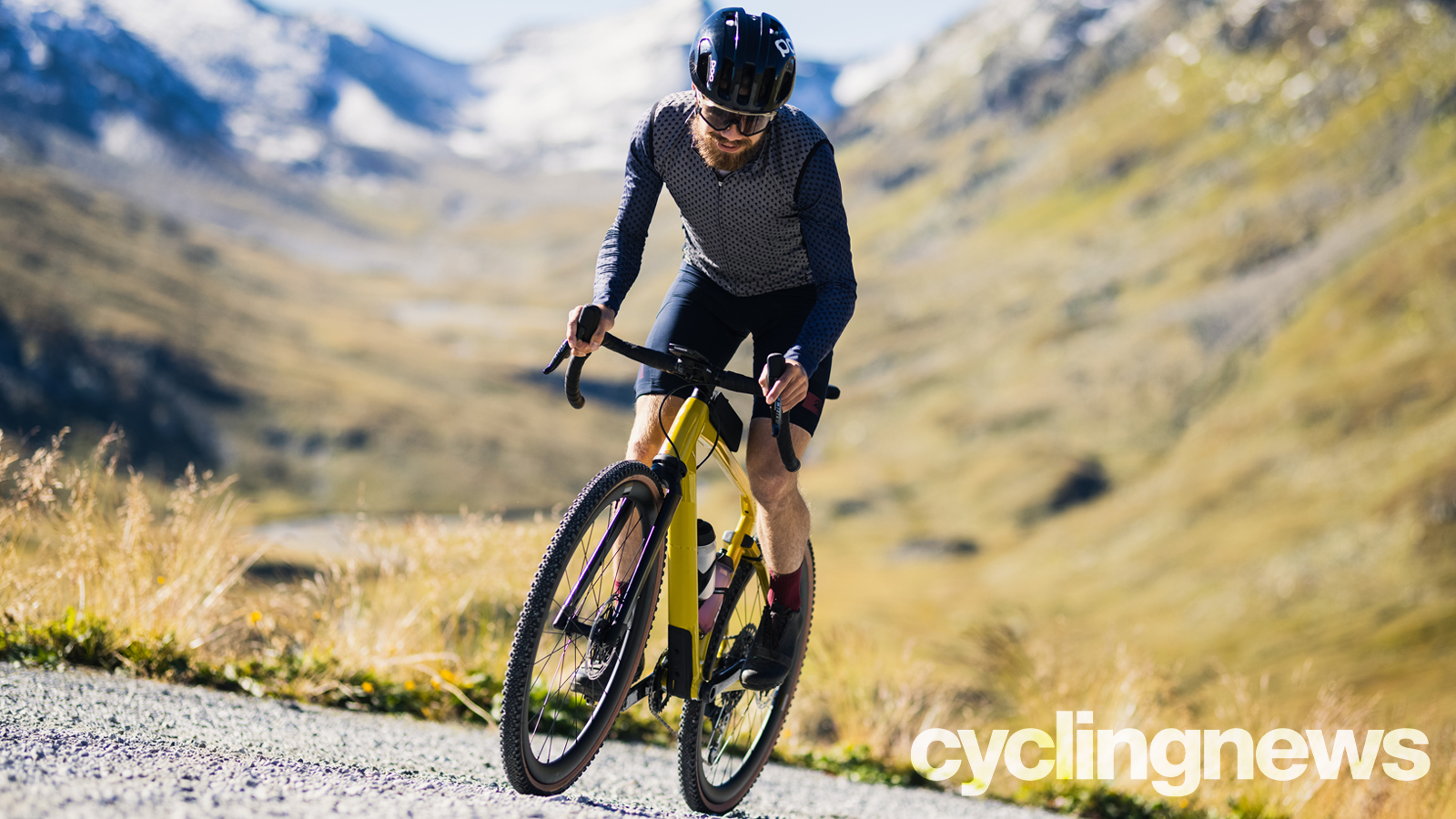
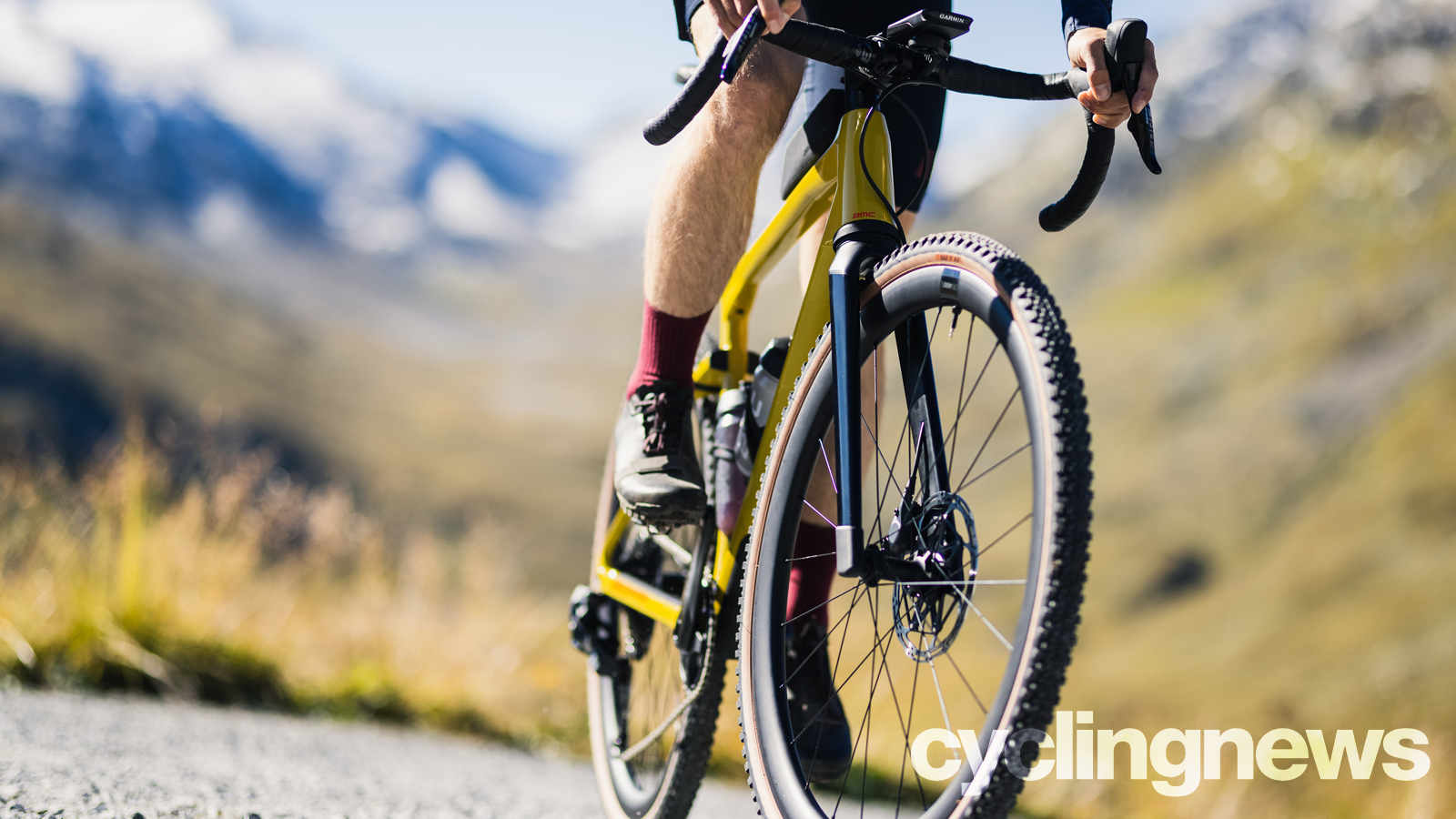
At 72kg, and as a rider who relishes the descents, the medium spring felt quite soft which meant that the suspension was very active and there was a noticeable end to the compression as speeds and impacts increased. For the second part of the day, I switched to a High Preload spacer to see if there was a noticeable difference and while I lost a touch of compliance the suspension felt more supportive - which was surprising considering we are only talking about 20mm of travel.
BMC says that the URS LT allows riders to consider the suspension and tyres as a system with the idea that you can set your tyres at the optimal pressure and let the suspension worry about vibration dampening. In theory, this makes sense, especially for those that prioritise low rolling resistance, however, my gravel riding encourages low pressures and I have settled on between 20-25psi to be the sweet spot for my riding style and setup. Gravel tyres with supple casings already do a good job of filtering out vibrations too, especially if you are running 50mm tyres as I do. That said, If I was able to have a longer time on the bike I would have been very interested to try running a low pressure 45mm tyre with a firm suspension setup so that the tyre offers maximum grip and handles the majority of small vibrations and the suspension adds a secondary layer of control if you hit something hard.
While the front suspension was notably active in its stock setup, the 10mm of rear travel isn't as obvious. It's sometimes possible to see it working while riding alongside another URS but if you try to compress it by pushing down on the saddle you will see far more deflection from the D-Shaped seatpost. It's also hard to detect when riding and while I'm sure it was working, for better or worse, it wasn’t until you hit something that would normally send shockwaves through a rigid bike that there was any tangible performance.
On the subject of hitting square edges hard, the URS geometry is superbly stable yet it doesn't dull its playful nature. It's this quality that has an uncanny ability to encourage you to ride harder than sensibilities would otherwise allow, yet have the calm and collected approach to pull you back from trouble at the last moment. This is lucky as there were a number of heart-in-mouth points that could have easily ended in disaster had I not been on a bike with more than a metre of wheelbase and a slack head angle. On the climbs, it might not be as quick as racier gravel bikes but it's hardly a slouch and will happily tap out a strong pace as gradients ramp up.
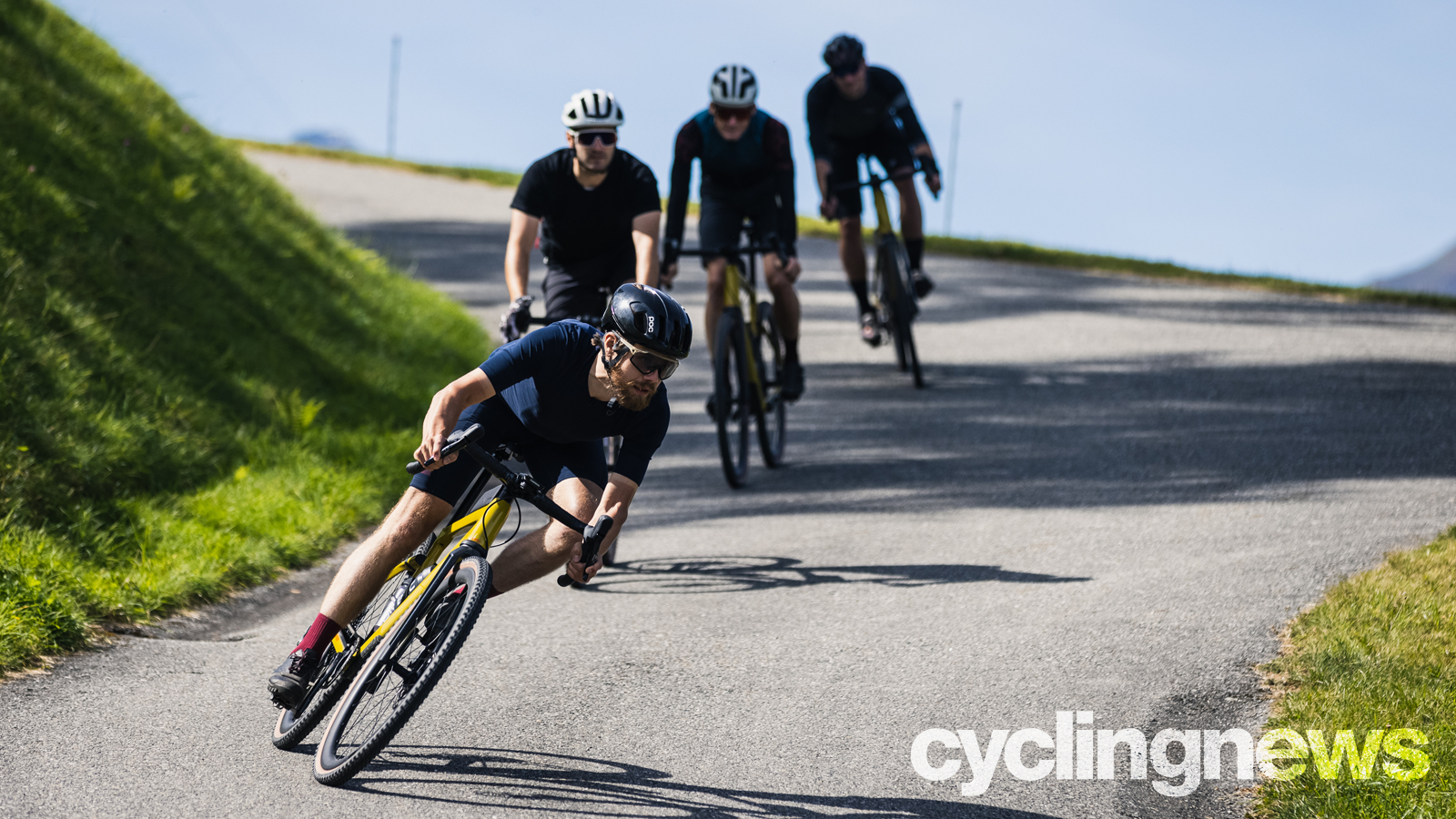
Early verdict
Gravel suspension is still a very new concept so it's interesting to see different brands approach this concept to meet consumer demands. BMC’s new front suspension system is neat, tidy and super reactive to the majority of imperfections that are found on a gravel ride without being overly present. Aggressive gravel shredders will want to give the suspension a stiffer tune for added support when speeds increase and impacts become harsher. They will also probably want to upgrade the tyres to something larger and more robust to make the most of BMC’s Gravel Plus development.
While there are only nine tuning options (three springs and three preload spacers) and it isn't as simple as twisting a knob or tweaking PSI, there was a tangible difference in performance. It would be interesting to get some more time aboard the URS LT to drill down how the relationship between tyre and suspension influence each other.
After my short time riding the URS LT, it was clear that it's a very capable gravel bike which after some suspension fettling and a tyre upgrade, could really show how unrestricted it actually is.
Tech Specs: BMC URS One 2022
- Price: US$TBC / £TBC / €7,999
- Frame: URS Premium Carbon with Micro Travel Technology,
- Tuned Compliance Concept Gravel
- Size: 54cm
- Weight: TBC
- Groupset: SRAM X01 EAGLE AXS
- Crankset: SRAM Force eTap AXS XPLR crank; 38T
- Cassette: SRAM XG 1275 EAGLE 10-52T
- Wheels: CRD-400
- Brakes: SRAM Force eTap AXS HRD, Centerline X Rotors (180/160)
- Handlebar: Easton EA70 AX
- Stem: BMC MSM02
- Seatpost: URS 01 Premium Carbon D-Shaped Seatpost
- Saddle: WTB SL8 Titanium
- Tyres: WTB Raddler, 40 mm
Graham has been part of the Cyclingnews team since January 2020. He has mountain biking at his core and can mostly be found bikepacking around Scotland or exploring the steep trails around the Tweed Valley. Not afraid of a challenge, Graham has gained a reputation for riding fixed gear bikes both too far and often in inappropriate places.
What is a hands on review?
'Hands on reviews' are a journalist's first impressions of a piece of kit based on spending some time with it. It may be just a few moments, or a few hours. The important thing is we have been able to play with it ourselves and can give you some sense of what it's like to use, even if it's only an embryonic view.
